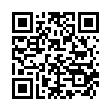|
This article is cited in 5 scientific papers (total in 5 papers)
Digital Information Telecommunication Technologies
Empirical approach to the estimating the immunity of phase modulation signals with continuous phase
S. Dvornikova, S. Dvornikovb
a State University of Aerospace Instrumentation (SUAI)
b Military Academy of Communications named after Marshal of the Soviet Union SM Budennogo
Abstract:
The high spectral efficiency of signals with continuous phase modulation (CPM) has determined their popularity and active use in various radio engineering projects. The uniqueness of the properties of CPM signals is associated with the preservation of the continuity of their phase when changing information messages for the duration of a symbol. At the same time, until recently, of the entire wide class of signals with continuous phase modulation, the most widespread were various variations, the so-called Minimum Shift Keying (MSK) signals. However, these are far from the only representatives of the class of CPM signals with the property of high spectral compactness. This article examines no less interesting signals of this class, formed by means of Dual Phase Modulation (DPM). In particular, analytical expressions of their synthesis are presented, their belonging to the class of CPM signals is substantiated. In addition, the article investigates the temporal properties of the phase function recommended by ITU-R SM.328-11 for the synthesis of signals with continuous phase modulation, presents the time and frequency fragments of MSK signals in comparison with signals with Binary Phase Shift Keying (BPSK). The stages of the analytical derivation of the model of noise immunity of PCM signals in terms of the probability of a bit error based on an empirical approach are presented. The generality of the obtained model with the known expression for MSK signals is shown by studying the difference function of the approximation error (error of the order of 10$^{-3}$), which made it possible to obtain a more compact representation of the developed model in relation to DPM signals. It has been proven that DPM signals have higher noise immunity properties in relation to MSK signals (about 0.5 dB at an error level of 10$^{-5}$), using the results of studying the difference functions determined by the difference between the signal symbols corresponding to the information values "1" and "0". The directions of further research are determined.
Keywords:
signals with continuous phase modulation, signal noise immunity, bit error probability, spectral properties of signals.
Received: 16.11.2020
Citation:
S. Dvornikov, S. Dvornikov, “Empirical approach to the estimating the immunity of phase modulation signals with continuous phase”, Tr. SPIIRAN, 19:6 (2020), 1280–1306
Linking options:
https://www.mathnet.ru/eng/trspy1133 https://www.mathnet.ru/eng/trspy/v19/i6/p1280
|

| Statistics & downloads: |
| Abstract page: | 93 | | Full-text PDF : | 143 |
|




 Contact us:
Contact us: Terms of Use
Terms of Use
 Registration to the website
Registration to the website Logotypes
Logotypes








 Citation in format
Citation in format 
